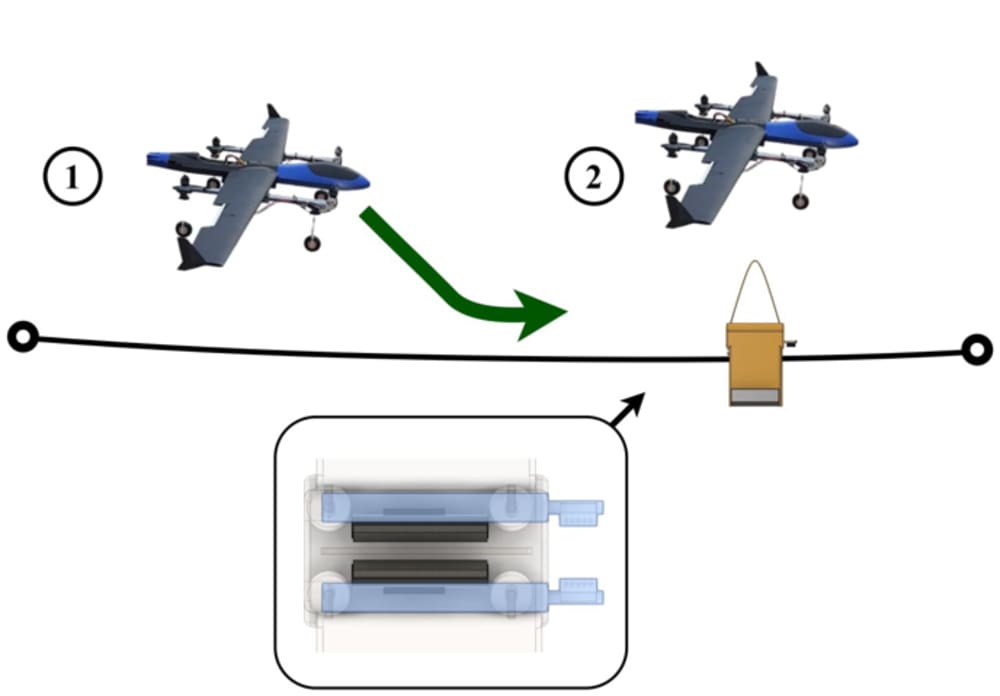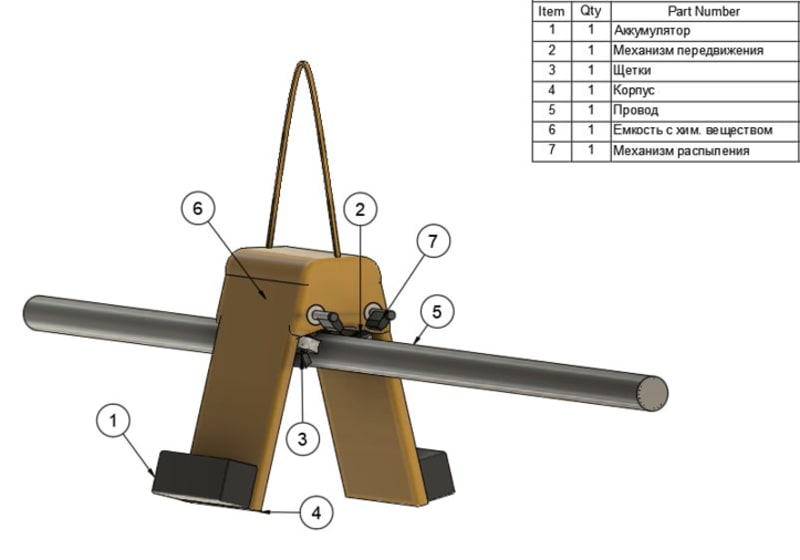CleanLine VTOL is an innovative robotic system designed to tackle one of the major challenges in modern energy infrastructure - pollution and contamination of high-voltage power lines. Developed by a team of robotics specialists from Kazakhstan-British Technical University, the project aims to reduce energy losses, minimize maintenance risks, and promote environmental safety through a modular cleaning solution deployed by a vertical take-off and landing (VTOL) drone.
Traditional methods of cleaning power lines include hazardous manual labor, inefficient chemical spraying from the ground or helicopters, and complex vibration-based equipment permanently installed on pylons. These approaches are either expensive, risky, or inflexible. CleanLine VTOL offers a safer, smarter alternative: an autonomous flying system that delivers a robotic cleaning module to the power line, installs it safely, allows it to move along the conductor while performing cleaning, and retrieves it upon completion.
The cleaning process combines mechanical and chemical methods. The platform is equipped with rotating brushes, soft rollers, and an electromechanical vibrator for physical removal of debris, as well as a precision-controlled sprayer that applies a glycol-based cleaning solution (such as ethylene or propylene glycol) to dissolve hardened grease and contaminants. This dual-action approach ensures deep cleaning even under harsh weather conditions.
The VTOL drone operates autonomously: it carries the cleaning module to the power line, performs a controlled landing onto the wire, and initiates the module’s attachment sequence. The cleaning unit then moves along the conductor, treating the section as programmed. Once cleaning is completed for one segment, the drone lifts the module and transports it to the next target area or back to the base. This approach enables targeted cleaning of specific dirty sections, reducing energy consumption, chemical usage, and manual intervention.
From an environmental perspective, CleanLine VTOL helps prevent energy losses caused by conductor pollution, which in Kazakhstan and other regions can account for substantial inefficiencies in the power grid. Since the drone is electrically powered, it produces zero emissions during operation. The cleaning reagents are applied with precision, avoiding ecological contamination and ensuring sustainable use of chemicals. In comparison to helicopter-based spraying, this system dramatically reduces overspray and reagent waste.
The project also boasts a modular design, leveraging 3D-printed components that make production and customization more scalable and cost-effective. Its architecture allows upgrades and variations for different cable types and operating conditions. The entire development cycle is expected to take 15 months, including 3 months of research, 10 months of design, prototyping, and integration, and 2 months of laboratory and field testing. A working prototype will be created, tested, and documented through technical reports or academic publications.
CleanLine VTOL is not just a tool - it is a forward-looking platform that merges robotics, aerial technology, and smart maintenance practices.
Like this entry?
-
About the Entrant
- Name:Kristina Mlikova
- Type of entry:teamTeam members:
- Kristina Mlikova
- Rassul Tolengutov
- Diana Butakova
- Alibek Nakhimov
- Gholibjon Qasobov
- Yefim Mlikov
- Software used for this entry:Autodesk Fusion 360, Bambu Studio, MATLAB, Visual Studio Code (Python)
- Patent status:none








